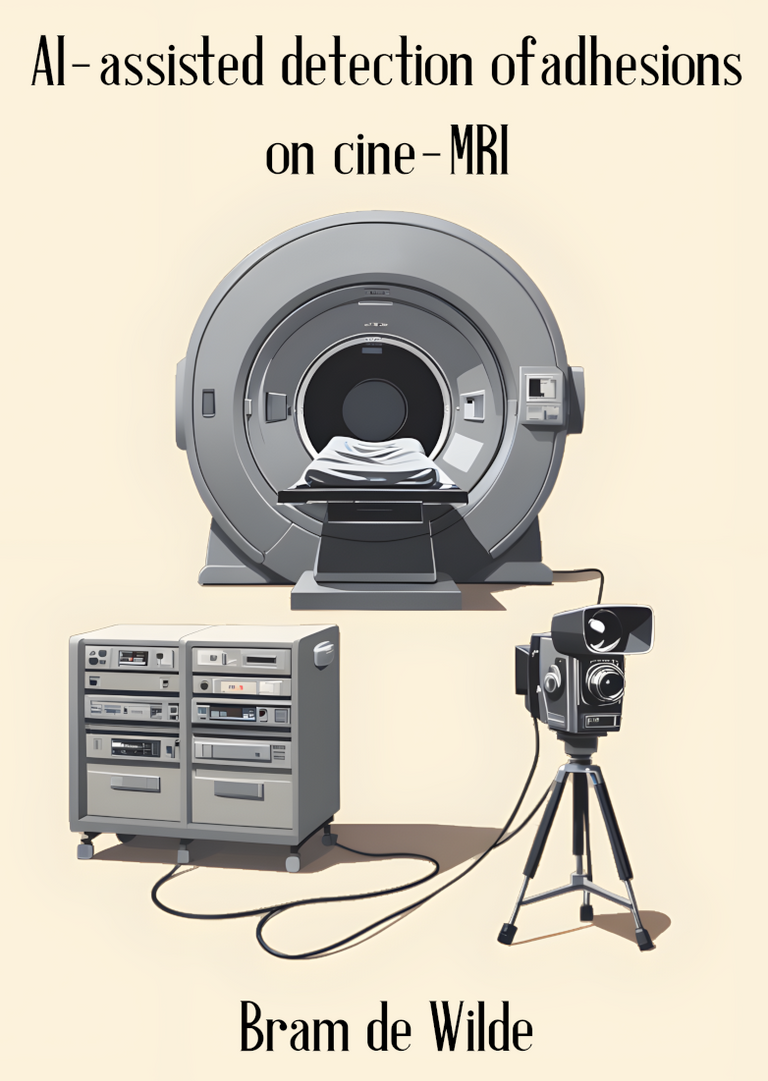AI-assisted detection of adhesions on cine-MRI
B. de Wilde
- Promotor: H. Huisman and H. van Goor
- Copromotor: R. ten Broek
- Graduation year: 2024
- Radboud University, Nijmegen
Abstract
The thesis starts with five chapters dedicated to adhesion diagnosis on cine-MRI, followed by three chapters which explore relevant aspects of training deep learning systems with little data, concluding with a general discussion in the final chapter.Chapter 2 Observer variability and the importance of expertise in cine-MRI for adhesion detection have not yet been studied, but are important for clinical implementation. We investigate and quantify this in a multi-reader observer study. Chapter 3 Motion generated by patients during cine-MRI determines scan quality, but which patient factors contribute most is unknown. We investigate automatic quantification of abdominal wall motion and use this to study patient factors which influence scan quality on a large retrospective cohort. Chapter 4, Chapter 5 Cine-MRI for adhesions is a new problem in deep learning, with no existing approaches. In Chapter 4 we investigate the use of recurrent neural networks to exploit temporal information for diagnosis of adhesions. In Chapter 5 we study spatio-temporal segmentation architectures for diagnosis and detection of adhesions. Chapter 6 The potential benefits of AI assistance for reading cine-MRI are unknown. We study the effect of AI on radiologists' diagnostic and detection performance, as well as confidence, in a multi-reader observer study using models developed in Chapter 5. In the following three chapters of the thesis, the focus is on a setting like cine-MRI, where a small dataset of high quality labeled images is available, along with an extra dataset of unlabeled images. Chapter 7, Chapter 8 Leveraging model uncertainty for semi-supervised learning could be useful in medical settings with little annotated data. In Chapter 7, we compare uncertainty metrics in both a segmentation and a detection setting. In Chapter 8, we use uncertainty to select optimal pseudo-labels in a semi-supervised segmentation setting. Chapter 9 Generative imaging is reaching high quality and diversity on natural images, but it is unclear if these models can be used for medical image generation. We investigate whether state-of-the-art diffusion models for natural images can be adapted to the medical imaging domain. Chapter 10 We summarize the key contributions of this thesis and discuss implications and future directions.
